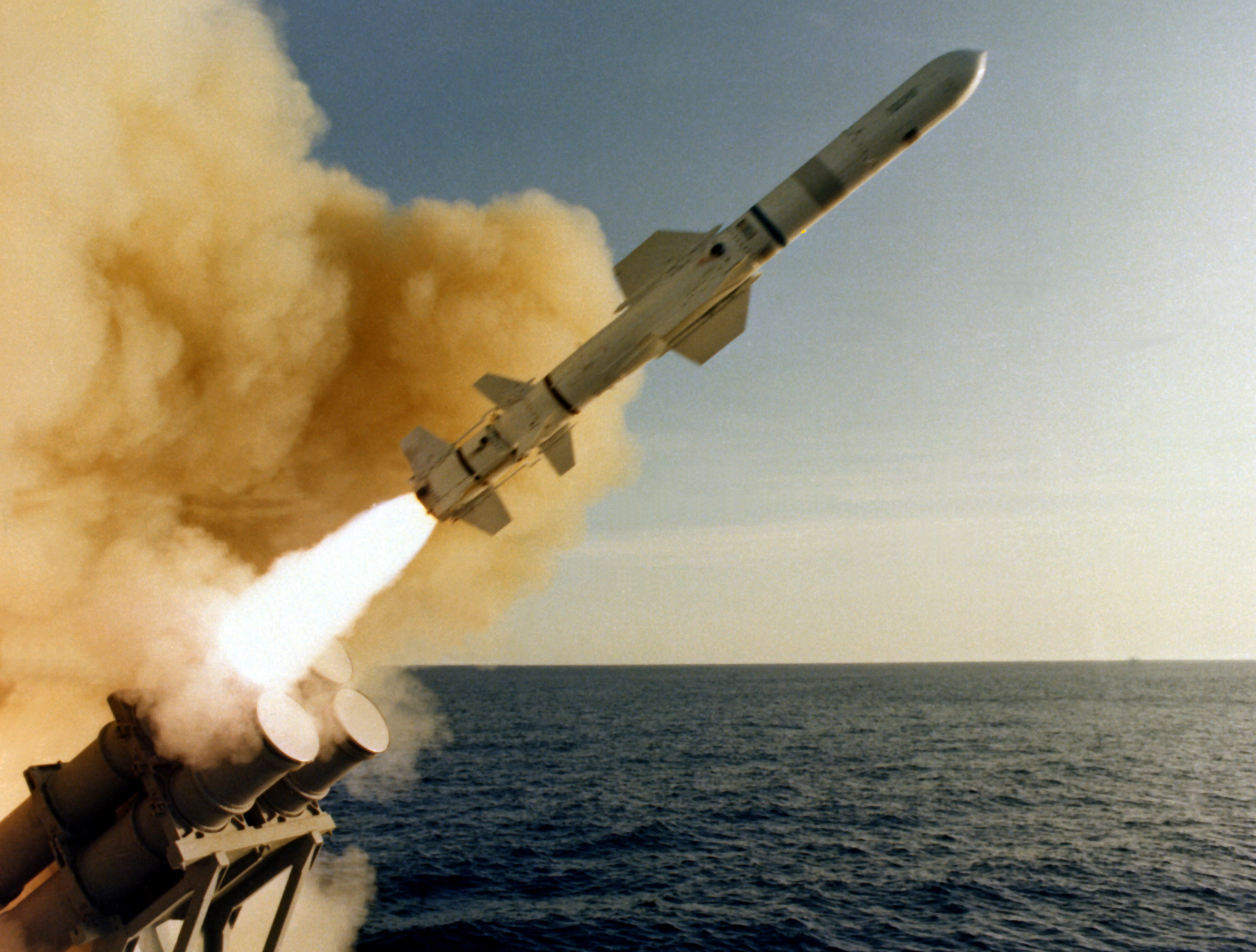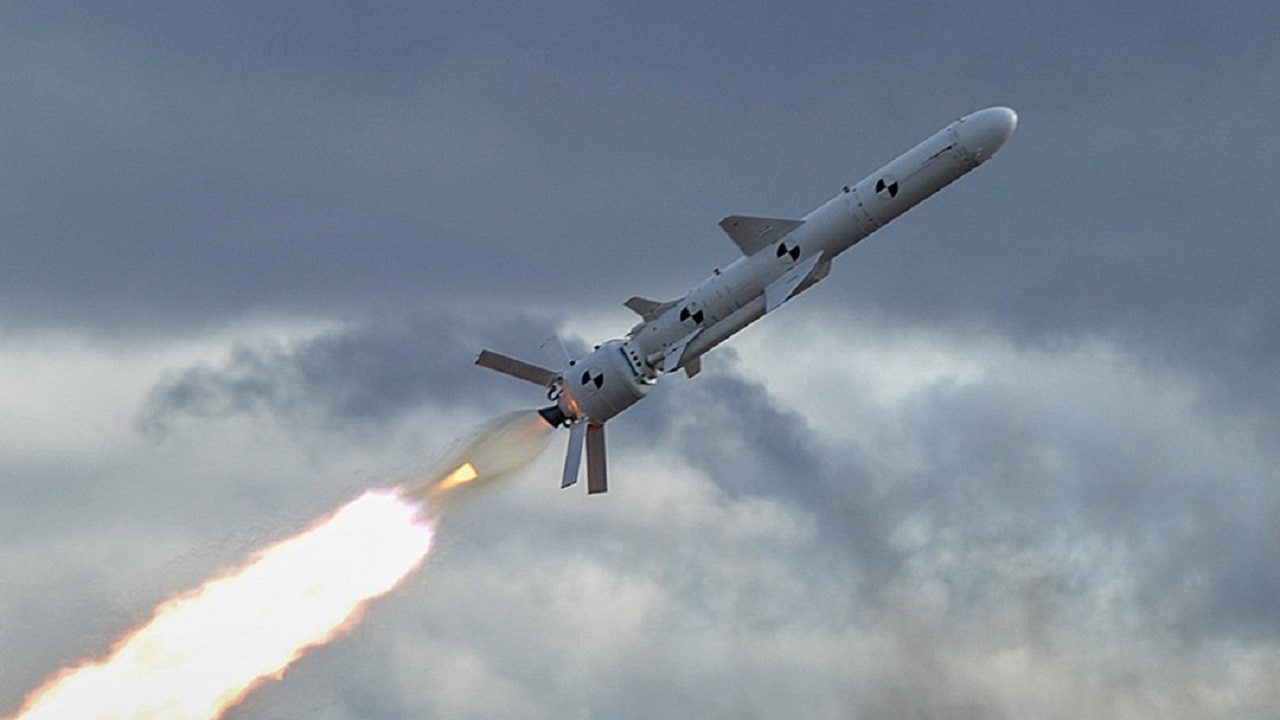Uk Anti-ship Missiles - Home | US Navy - Ships | US Navy - Aviation Departments | USMC - Airborne Units | International Navy | Weapon Systems | Special reports
The Sea Squaw is a lightweight British short-range air-to-surface missile (ASM) designed for use against ships from helicopters. Mainly used by the Royal Navy on the Westland Lynx. The Royal Navy withdrew the missile from active service in 2017. Although the missile was designed for helicopter use, Kuwait uses it in a coastal battery and on the Umm Al Maradem (Combatant BR-42) fast attack craft.
Uk Anti-ship Missiles

Sea Squaw traces its history to the immediate post-war era. Increasingly concerned about the threat from aircraft, especially after the introduction of cruise bombs during the war, the Royal Navy had long been convinced that all ships needed some form of surface-to-air missile (SAM). These systems were relatively large, especially in the pre-vertical launch era, when it was difficult to mount both an effective SAM and a conventional weapon on small ships. The weapon was seen as important as the Navy's mission shifted from focusing entirely on war with the Soviet Union to projecting power around the world.
Ukraine Sinks Russian Vessel Using Harpoon Missiles: Uk Intel
This led to a series of tests to develop a dual-use missile capable of both anti-aircraft and anti-ship applications. Both initial naval guided missile packages, the Seaslug and Seacat, had secondary anti-ship roles. The Seaslug was a large system and could only be carried by large ships, while the Seacat could fit almost any ship, but had a relatively short range and a small warship. Nor did it achieve the goal of replacing weapons. In October 1960, the Navy began a program aimed at producing a weapon that could be mounted on a 3,000-ton warship and capable of hitting bombers, anti-ship missiles, and other warship-sized ships. This led to the small ship-guided gun and eventually to the sea dart. This system proved too large for the smaller ships and the demand was not met.
The sinking of Elliott in 1967 led to the realization that small fast attack craft were a serious and immediate threat. A weapon was needed that could destroy such a vessel before they could even get within range to launch the missiles. The Seacat didn't have anywhere near the range required, the Sea Dart did, but couldn't match most RN ships. A new conventional missile could be dedicated to the role, but would have to be the same size as the one it targets, which would take up more space on a ship carrying multiple weapons systems.
Abandoning the original idea of having a dual-use weapon, the whole idea was re-evaluated and led to the decision to launch the weapon from helicopters. This would allow a smaller gun to have both the required range and the size of the warship. The missile will be carried by the new Westland Lynx and its targets will be detected by their sea spray radar. The range doesn't have to be long, just enough to keep the helicopter out of range of anti-aircraft weapons that the boats can carry. Its combat capability was further enhanced by the addition of the Racal "Orange Crop" ECM package, which allowed the helicopter radars to track vessels attempting to approach ships, allowing the helicopters to approach without sea spray. Last minute.
The British Aircraft Corporation (PAC) began development in May 1972. The British government approved its production in October 1975. At the time, the missile was known as the CL.834.[1] The first launch took place in November 1979 in the Aberford area of Cardigan Bay. Three missiles were launched from the ground and three from helicopters. Further tests were carried out and in July 1981, full production of the new missile, now known as the "Sea Squaw", was ordered.
Sea Skua Anti Ship Missile Agm Asm Lynx Helicopter Royal Navy
With a projectile weighing 320 pounds (150 kg) at launch, a Lynx helicopter can carry up to four people, two on each wing pylon. The booster is a Royal Ordnance (now Roxall UK) "Redstart" steel body, while the supporter is a Royal Ordnance "Madapan" light alloy body. The missile can fly at high subsonic speeds of up to 15.5 miles (24.9 km). The official limit is stated as 15 km, but this is widely violated. The missile has two sensors: a semi-active radar system from Marconi Defense Systems and a Thomson-TRD AHV-7 radar altimeter manufactured under license from British Aerospace Defense Systems (used by the Exocet missile).
Depending on surface conditions, it can be set to travel at one of four default altitudes. Closer to the target, the missile will climb to a height where it can "acquire" the target. The launch helicopter illuminates the target with its radar (initially a specially developed Ferranti sea spray in the case of the Lynx) and the interior of the missile houses the reflected energy. On impact, the 62 lb (28 kg) bomb penetrates the ship's hull before detonating the warhead into fragments. A semi-armored piercing (SAP) frigate is also available. Contains 9 kg (20 lbs) of RDX, aluminum and wax. The fuse is a shock delay model.
The illuminated radar on Lynx helicopters is a GEC-Ferranti Seaspray I belt, with a weight of 64 kg (141 lb), 90 kW power, two modes (three on the upgraded model) and a 90° field of view. Seaspray MK 3 had a rotating antenna with a 360° field of view. It can work during scan mode (TWS). The missile flight ends after 75-125 seconds, during which the helicopter can maneuver up to 80 ° from the missile path.

In addition to service with the UK, the Sea Squaw has been exported to Germany (where it will be replaced from 2012), India, Kuwait and Turkey. Although both rockets had similar performance, they were generally preferred over a similar competitor, the French-built AS 15 TT. The guidance of the AS-15TT was radio-guided and, unlike the more maneuverable British missile, required the Agrion 15 radar. The Sea Squaw's success in active service and its adoption by the Royal Navy resulted in considerable success in the international market.
Contenders For The Royal Navy's Interim Anti Ship Missile Requirement
The Sea Squash was launched eight times during the Falklands War, sometimes in very bad weather, and had a very high success rate. Four were deployed against the 800-tonne patrol boat/ARA rescue tug Alferez Sobral, launched by two Lynx helicopters from HMS Coventry and HMS Glasgow. Two struck a patrol boat on the bridge, one crashed into the ship's fiberglass sea dinghy, and one went overboard. Extensive damage was caused and eight crew members (including the captain) were killed, but the ship did not sink and returned to Puerto Dezedo. Another four Sea Squaws were deployed to clear the wrecks of the cargo ship Rio Cargarana (8,500 koh) and the patrol boat Rio Iguazu.
During the Gulf War, six Navy Lynx helicopters were deployed to the Gulf on four Royal Navy battleships and destroyers. On 24 January 1991 a Lynx sank two Iraqi mines near Kura Island. A third was cut.
A major engagement took place on 29 January 1991. Seventeen Iraqi landing craft and accompanying fast attack craft and minesweepers were spotted moving south near Failaga Island, part of the Iraqi offensive that led to the Battle of Kafji. Two ships were sunk by sea squash fired by four Lynx helicopters. The rest of the ships were damaged, destroyed or dispersed by American Royal Navy Sea King aircraft and helicopters.
The following day, three Polnocny-class landing craft, three TNC-45 fast attack craft (captured from Iraq by the Kuwaiti Navy) and a T-43 minelayer were found in the same area. Marine squaws dropped by four Lynx helicopters destroyed three fast attack ships and destroyed a mine and a landing craft. The landing craft was later destroyed by RAF Jaguars.
Harpoon Missile Hi Res Stock Photography And Images
During several engagements in February, Lynx with sea squaws destroyed a Juke-class patrol boat, an escort ship and another Bolnogni-class landing craft and damaged another Juke patrol boat.
The Sea Squaw entered service with the Royal Malaysian Navy as part of a package to purchase six AgustaWestland Sea Lynx 300 helicopters. The missiles are said to cost 104 million ringgit.
On 16 March 2006, the Royal Malaysian Navy test fired a Sea Squaw missile as part of a conventional firing exercise. The missile was launched eight miles from a 40-meter long surface target barge. The Sea Squaw failed to hit its target and failed to detonate. The fault is believed to be traced to a fault in the connecting pin cable that ignites the rocket motor. The missile fell into the sea and was not found. The Royal Malaysian Navy ordered Matra Bae Dynamics (MBDA) to withdraw the missiles to conduct system tests and review.

On 12 February 2008, the Royal Malaysian Navy successfully conducted a second launch. The missile was launched from maximum range and hit the surface
Uk To Send \
Anti ballistic missiles, russian anti ship missiles, russian anti aircraft missiles, anti satellite missiles, anti-ship ballistic missiles, anti air missiles, anti aircraft missiles, ship missiles, anti ship missiles, russian anti tank missiles, us navy anti ship missiles, anti tank missiles
0 Comments